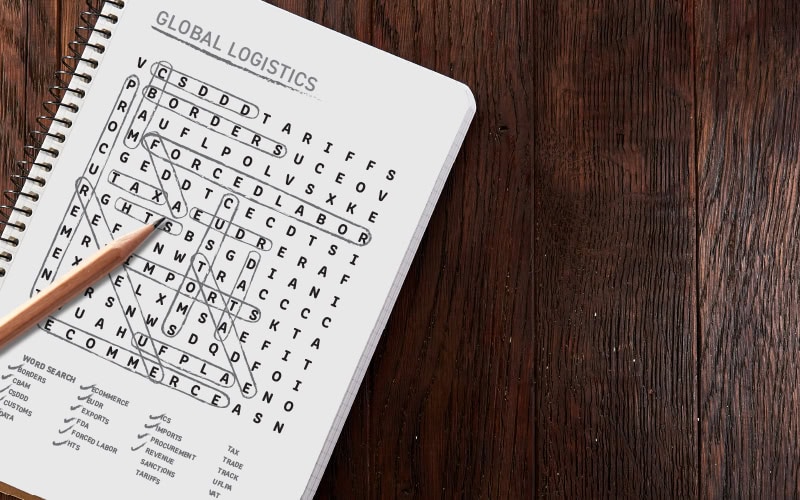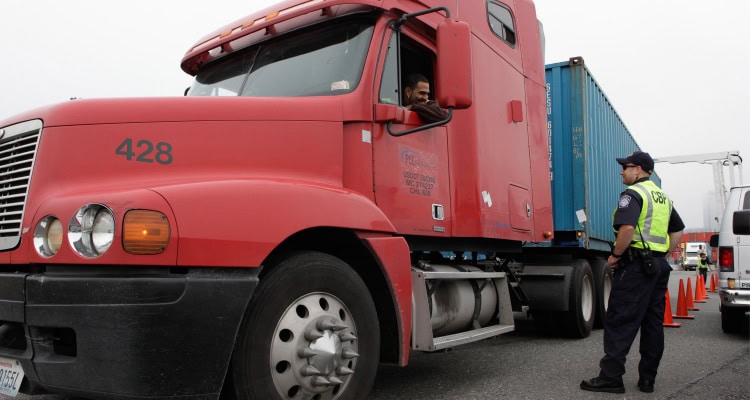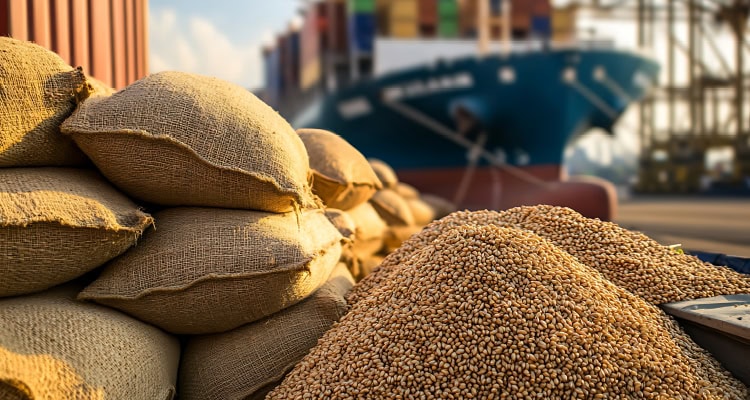9 Regulations Reshaping Global Logistics: Here’s How to Decode Them

Navigating the complex maze of regulations—from CBAM to the UFLPA—can feel like searching for hidden words in a difficult puzzle. With increased scrutiny on environmental, labor, and consumer impacts, global supply chains must stay ahead of the shifting regulatory landscape.
The alphabet soup of regulations that impact global supply chain and logistics operations—from the EU’s Carbon Border Adjustment Mechanism (CBAM) to the Uyghur Forced Labor Prevention Act (UFLPA) in the United States—is daunting and becoming more so. Regulators across the globe are more closely examining the impact supply chains can have on the environment, workers, consumers, and tax revenues.
In the United States, for instance, the enforcement power of Customs and Border Protection officers has increased since the mid-1990s, due in part to the greater volume of imports as well as technology that streamlines communications among various ports, says Nithya Nagarajan, attorney and partner with Husch Blackwell, which focuses on trade and supply chain issues.
Also driving governments’ enforcement efforts is their desire to close revenue gaps and ensure compliance, says Alison Layfield, director of product development at ePost Global, a provider of shipping solutions. For instance, Canada’s 25% surtax on steel and aluminum products from China shows how even seemingly niche regulations can have a widespread impact on supply chains.
In addition, many global companies work with tens of thousands of suppliers. That can equate to hundreds of thousands of vendor locations once you get several tiers into a supply chain, says Richard Barnett, chief marketing officer with SupplyFrame, a Siemens company and provider of design-to-source intelligence solutions for the electronics industry.
Adding to the complexity is the changing nature of the regulatory environment. Here are some of the regulations that merit monitoring.
1. Carbon Border Adjustment Mechanism (CBAM)

In today’s regulatory landscape, U.S. Customs and Border Protection manages a growing volume of imports—a role that has expanded significantly since the mid-1990s.
A European Union regulation, CBAM requires companies that import products considered carbon intensive, such as aluminum, to report on the embedded carbon in their goods, says Rebecca Miller, consulting senior manager with Crowe LLP.
Among other changes to CBAM, as of January 1, 2025, only the EU method of reporting carbon emissions will be accepted. For complex goods, estimates— including default values—can be used only if they account for less than 20% of the total embedded emissions, according to the European Commission.
Obtaining the data needed to meet these requirements becomes more arduous when products move through multiple supply chain tiers. And even companies that don’t sell directly into the EU may be swept up in the regulation if they’re links in the supply chains of companies that do sell into the EU.
2. Corporate Sustainability Due Diligence Directive (CSDDD)
Another EU initiative, the Directive on corporate sustainability due diligence (CSDDD or Directive 2024/1760) has set a goal of fostering sustainable and responsible corporate behavior in companies’ operations. The CSDDD will require relevant companies to take multiple actions, including identifying and addressing potential and actual adverse human rights and environmental impacts within their operations, their subsidiaries and, in some cases, their business partners.
Member EU states have until July 26, 2026, to bring the Directive into their national laws. The Directive will start to apply to the first group of companies one year later. In this group are EU companies with more than 5,000 employees and global revenue of more than Euro 1.5 billion, as well as non-EU companies with EU-generated revenues of more than Euro 1.5 billion.
3. Regulation on Deforestation-Free Products (EUDR)
In October 2024, the effective date of the EU’s Regulation on Deforestation-Free Products was postponed from year-end 2024 to year-end 2025 for large companies. “It’s one year for companies to get their arms around this,” Miller says.
This ruling focuses on commodities known to cause deforestation, such as cocoa and coffee, as well as on understanding where the products originated and if they contributed to deforestation, Miller says. The process for determining this can get thorny.
For instance, companies making furniture need to know the background of every piece of wood in their products, no matter how tiny. Otherwise, an entire piece may be non-compliant, Miller says.
Moreover, the directive applies to products that originate outside the EU, says Eric Linxwiler, senior vice president with TradeBeyond, a provider of solutions for global sourcing.
4. Uyghur Forced Labor Prevention Act (UFLPA)
In the United States, the UFLPA, originally issued in 2022, was recently updated, and the list of companies identified as making products with forced labor expanded. Goods made by these companies can’t be imported into the United States.
Customs officials may randomly ask importers of record to produce a digital chain of custody that documents the suppliers that contributed to a product, including providers of raw materials. They then check this data against lists of known blocked entities. If a company can’t produce these records, Customs can withhold the shipment indefinitely.
“If importers do not pay attention to the possibility of a withheld container months in advance of shipment, it’s already too late,” Linxwiler says.
Shifting production to other areas of Southeast Asia isn’t an automatic panacea, as importers handling goods coming from these countries also need to verify that any Chinese materials within their products weren’t made with forced labor, says Tony Pelli, practice director, security and resilience, with BSI Group. What’s more, the number of UFLPA seizures of imports coming from other countries in Southeast Asia has jumped: 22 seizures of goods from Thailand occurred between June 2022 and May 2023 and swelled to 918 between June 2023 and June 2024, says BSI.
5. EU Forced Labor Act
Although not in effect yet, the EU’s ban on forced labor promises to be sweeping. In November 2024, the European Council approved a ban on products made with forced labor. Companies will not be able to make available within the EU, or export from it, any products made using forced labor. The regulation will apply approximately three years after publication in the Official Journal of the European Union.
6. EU Import Control System 2 (ICS2)
The ICS2, which initially went live in June 2024, brings European import administration in line with the other major importing markets, with an identical regulatory process and data configuration, says Bryn Heimbeck, president and co-founder of Trade Tech (see sidebar).
In general, the ICS2 is looking for information many other countries already collect, such as the shipper, the consignee, the vessel, and departure and arrival dates. This process will enable more precise tracking and better decision-making, ultimately boosting efficiency, Heimbeck says.
7. De Minimis Trade Exemption

The U.S. government is considering changes to de minimis shipments—imports valued at $800 or less that enter duty free. With 140 million such shipments annually, policymakers are weighing adjustments to strengthen trade enforcement and safety regulations.
In September 2024, the Biden Administration announced steps to potentially adjust de minimis shipments, or those in which the aggregate fair retail value of the items imported is $800 or less.
These shipments, which total about 140 million annually, enter the United States with less information than other imports and are not subject to duties and taxes. That makes it challenging to enforce U.S. trade laws and health and safety requirements, among other concerns. Support for decreasing the de minimis amount or changing the way it’s calculated appears to be bi-partisan, Pelli says.
In its announcement, the Administration said it intends to issue a Notice of Proposed Rulemaking that would exclude from the de minimis exemption certain shipments, such as those covered by tariffs imposed under Sections 301 of the Trade Act of 1974. Section 301 tariffs cover approximately 40% of U.S. imports, including 70% of textile and apparel imports from China, the announcement stated.
8. Value-Added Tax (VAT) Regulations
Value-Added Tax (VAT) regulations continue to change. In Switzerland, for instance, new VAT registration requirements went into effect on January 1, 2025.
Previously, mail-order businesses shipping goods to Switzerland had to remit VAT payments if their annual revenue from the shipments topped 100,000 Swiss francs. Now, all mail-order platforms must declare and pay VAT for every delivery within Switzerland, no matter their volume.
Frameworks like the EU’s VAT Import One-Stop Shop (IOSS), are expected to expand globally, Layfield says. The IOSS was created by the EU for VAT administration of low-value e-commerce imports. It can streamline cross-border ecommerce taxation but also adds compliance complexity. To reduce errors, supply chain teams should integrate into their ecommerce platforms automated tax calculation systems that can handle real-time tax remittance.
9. U.S. Food and Drug Administration (FDA) Regulations

FDA regulations require imported food products arriving at U.S. ports to have proper labeling and factory registration. Failure to meet these requirements can lead to costly relabeling, destruction, or complicated re-exportation.
About 30% of consumer dollars are spent on FDA-regulated products, says David Lennarz, president of Registrar Corp. However, some importers of FDA-regulated products don’t understand the steps to be completed in advance of importing. For example, foreign manufacturers need to register with the FDA and identify the factory in which a product was produced.
Importers should check that their foreign suppliers meet the FDA’s labeling requirements, as mislabeled products can be charged with misbranding. Potential corrective actions are less than ideal.
For example, petitioning to relabel or destroy the products is costly. Re-exporting products to another country often becomes a logistical nightmare.
Moreover, attempts to strong-arm the FDA into releasing products they’re detaining rarely work. “Their goal is public health, not ensuring smooth commerce,” Lennarz notes.
A Compliance To-Do List
Working proactively to minimize the risk of compliance mistakes generally is more effective and less expensive than trying to correct errors once they’ve occurred. Some steps to take:
☑ Partner with experts. Whether attorneys, brokers, or others in the industry, experts can help companies monitor and comply with changing regulations, Nagarajan says.
☑ Pay attention to design. In some cases, about 80% of a product’s lifecycle costs, risks, and environmental impact is determined in the design phase, Barnett says. By making engineering and design decisions with input from procurement, supply management, and logistics, companies may be in a better position to comply with regulations.
☑ Establish sound compliance processes and procedures. The more a company can proactively address potential challenges, the less likely they are to cascade out of control.
☑ Be meticulous. Simple mistakes, like incorrectly listing the country of origin, can cause problems. Similarly, accurately classifying goods according to the Harmonized Tariff Schedule (HTS) should be a detailed exercise based on hierarchical analysis of the products and their physical descriptions.
☑ Map the supply chain. Know who’s doing what, Pelli says. To be sure, this probably means corralling volumes of information about a company’s import activities and partners. Big data tools can help.
☑ Watch for industry-wide efforts. For example, Yarn Ethically and Sustainably Sourced (YESS) is focused on shifting the industry with a multi-stakeholder approach, says Patricia Jurewicz, founder and CEO of the Responsible Sourcing Network. YESS, an RSN initiative, recently announced its first cohort, which includes adidas, Fanatics Apparel, and INDITEX. An industry-wide approach can cut costs and boost efficiency and consistency, particularly for small and mid-sized enterprises that lack sizable compliance departments.
☑ Leverage real-time analytics tools. These can help companies monitor regulatory risks, track carbon emissions, and optimize compliance processes. As a result, these systems enable companies to more quickly adapt to changes, Layfield says.
☑ Incorporate obligations around reporting and data sharing when vetting new suppliers, says Ashley Hetrick, principal and sourcing and supply chain segment leader, management consulting with BDO. By broaching this prior to the purchasing decision, the buyer has the most leverage.
The work required to stay on top of today’s complex regulatory landscape is formidable, but compliance can offer a strategic advantage.
“Companies that prioritize transparency, sustainability, and agility in their supply chains are better positioned to adapt to change, mitigate risks, and gain consumer trust,” Layfield says.
Smart Strategies to Mitigate Tariff Risks
Top of mind for many supply chain executives is the prospect of higher tariffs. The following steps can help mitigate their impact.
Check HTS codes. Most, if not all, of the proposed hikes will be assigned by individual tariff codes, says Damon Pike, principal and technical practice leader, national tax office customs and international trade services with BDO. Companies should confirm they’re using the correct 10-digit HTS codes. “Getting it wrong can have significant cash consequences,” he adds.
Verify the country of origin. China is the target for many of the proposed tariffs, so ascertaining the true “country of origin” will be key to minimizing them. At the same time, the U.S. imposes a “substantial transformation” test to determine the true country of origin. This is not always the country where the final assembly or production takes place, Pike says. If a product originates in China it may be subject to a tariff, even if some additional work is completed in another country.
Block and tackle. If moving production from China doesn’t make sense, consider more conventional supply chain strategies to offset potential tariffs, such as reducing inventory on-hand and rationalizing SKUs.
Consult your customs bond broker. If tariffs jump significantly, the limit on customs bonds also will increase. Underwriters may more closely scrutinize shippers’ finances, to ensure they can pay, should it become necessary, says Dan Swartz international tax services principal with Crowe LLP. Companies should connect with their bond broker to identify strategies they can take to mitigate the potential impact from higher tariffs, he adds.
Embracing ICS2-ENS
By Bryn Heimbeck, President and Co-Founder, Trade Tech
The European Union’s Import Control System 2 (ICS2-ENS) brings Europe, the largest trading market in the world, in line with other major importing markets with an identical regulatory process and data configuration.
Here’s why ICS2-ENS matters and how strict data rules ensure accuracy and operational fluidity.
By mandating that all Bill of Lading information be submitted to EU Customs 24 hours before cargo is loaded, ICS2-ENS enhances visibility, accuracy, and standardization across the supply chain. This advance notice enables more precise tracking and better decision-making, ultimately leading to greater efficiency and reduced delays.
Ignoring ICS2-ENS can lead to severe consequences, including hefty fines for data inaccuracies and potential disruptions in cargo flow. The system’s rigorous data accuracy requirements and its alignment with international standards underscore the need for businesses to adapt proactively.
Implementing robust compliance measures and leveraging advanced technologies will not only help avoid financial penalties but also streamline operations and enhance overall supply chain performance.
Visibility in the Supply Chain.
By requiring detailed shipment data in advance, ICS2-ENS provides a comprehensive view of cargo from loading to discharge. This early notice improves tracking and offers stakeholders actionable insights into their cargo’s journey, ultimately facilitating better decision-making and enhancing operational efficiency.
The Imperative of Data Accuracy and Completeness.
Visibility alone isn’t enough; accurate and complete data is crucial. While penalties for non-compliance have not been finalized for ICS2-ENS, similar regulatory requirements impose strict penalties—up to $5,000 per shipment—for data inaccuracies or omissions. This regulatory pressure underscores the need for precise data submission. Errors or incomplete information can lead to severe fines and compliance issues, making data integrity a cornerstone of smooth supply chain operations.
The Role of Data Standardization.
ICS2-ENS’s focus on data standardization mandates a uniform data submission format to a single EU Customs authority, ensuring consistency across all industry participants—carriers, NVOCCs, forwarders, terminals, and brokers. This standardization simplifies compliance, reduces errors, and improves operational efficiency.
ICS2-ENS also aligns closely with the World Customs Organization Data Protocol, suggesting potential for further global harmonization in trade regulations.
Customs Clearance and Managing Congestion.
ICS2-ENS also addresses customs clearance timing, allowing pre-arrival clearance and better congestion management at ports.
To support this, service providers need to send shipment data to customs brokers via electronic methods immediately after vessel departure. Real-time data transfer enables brokers to prepare for prompt customs clearance, reducing delays and enhancing overall efficiency.
Automated Customs Clearance.
Automated customs clearance is on the horizon. With technological advancements, customs clearance could soon be automated based on pre-classified SKUs and commercial invoices. This automation promises to streamline processes, minimize manual intervention, and further accelerate global trade efficiency.
By enforcing strict data requirements and aligning with international standards, ICS2-ENS addresses key industry challenges and sets the stage for future advancements in customs processes.
